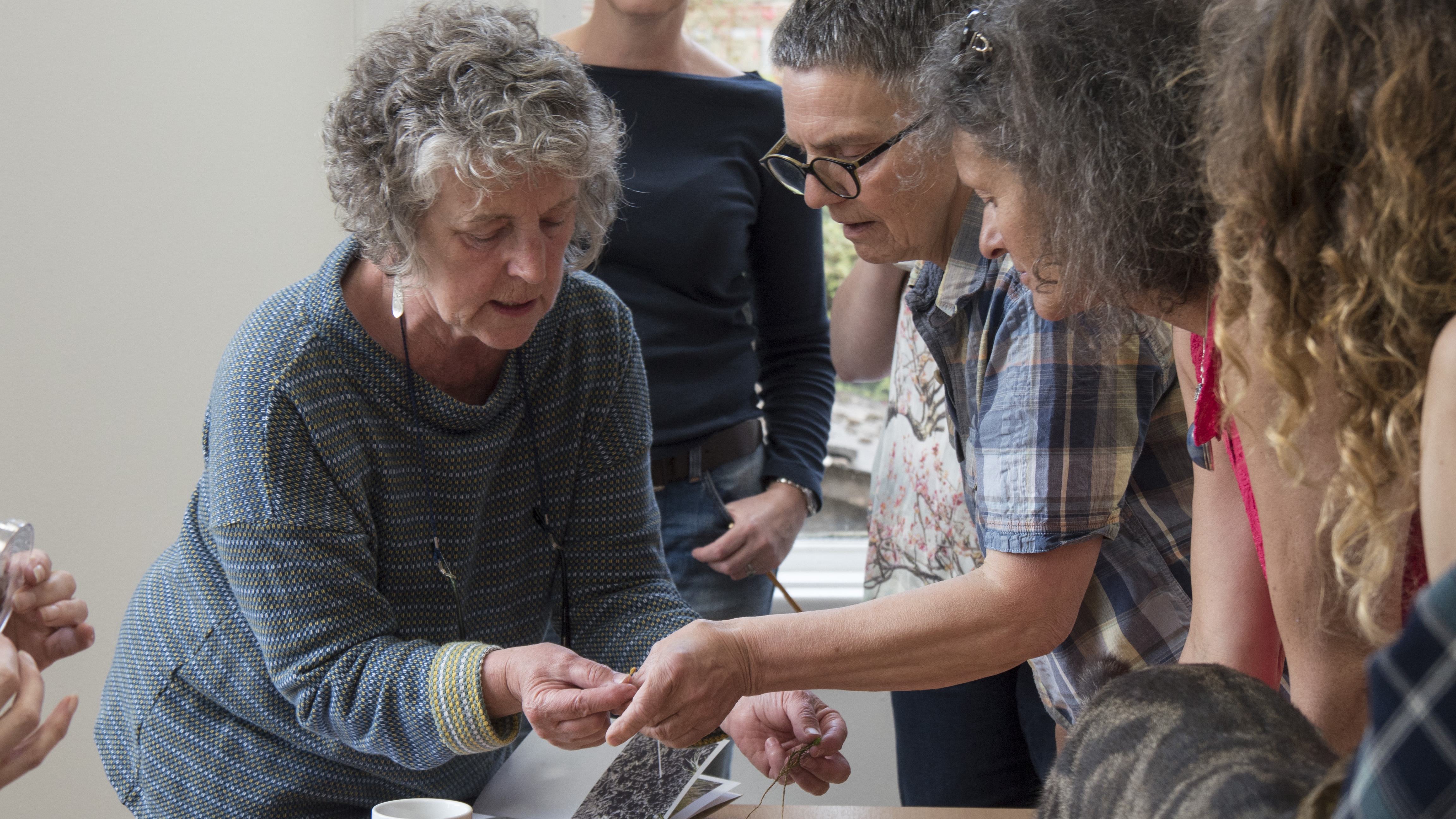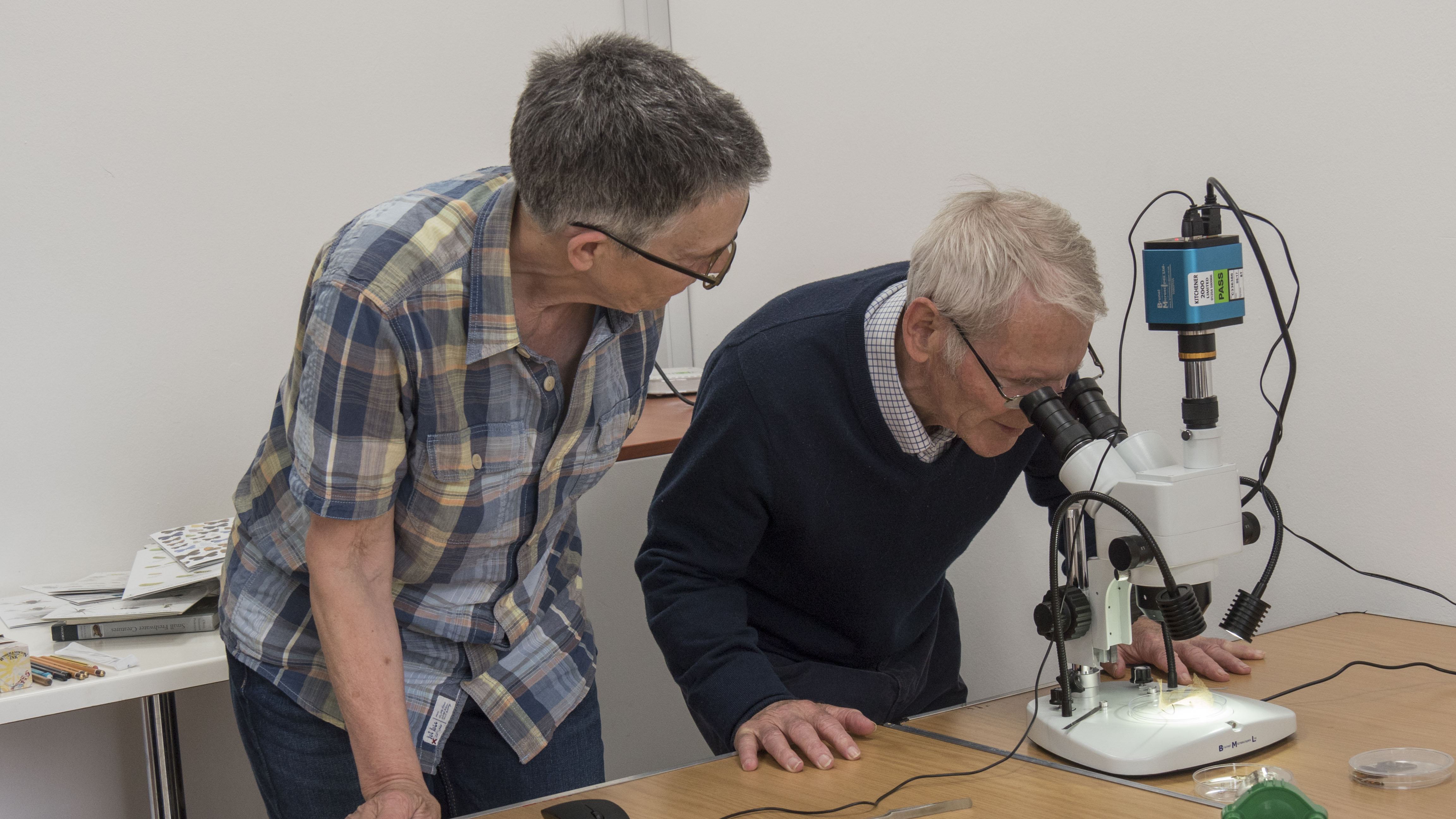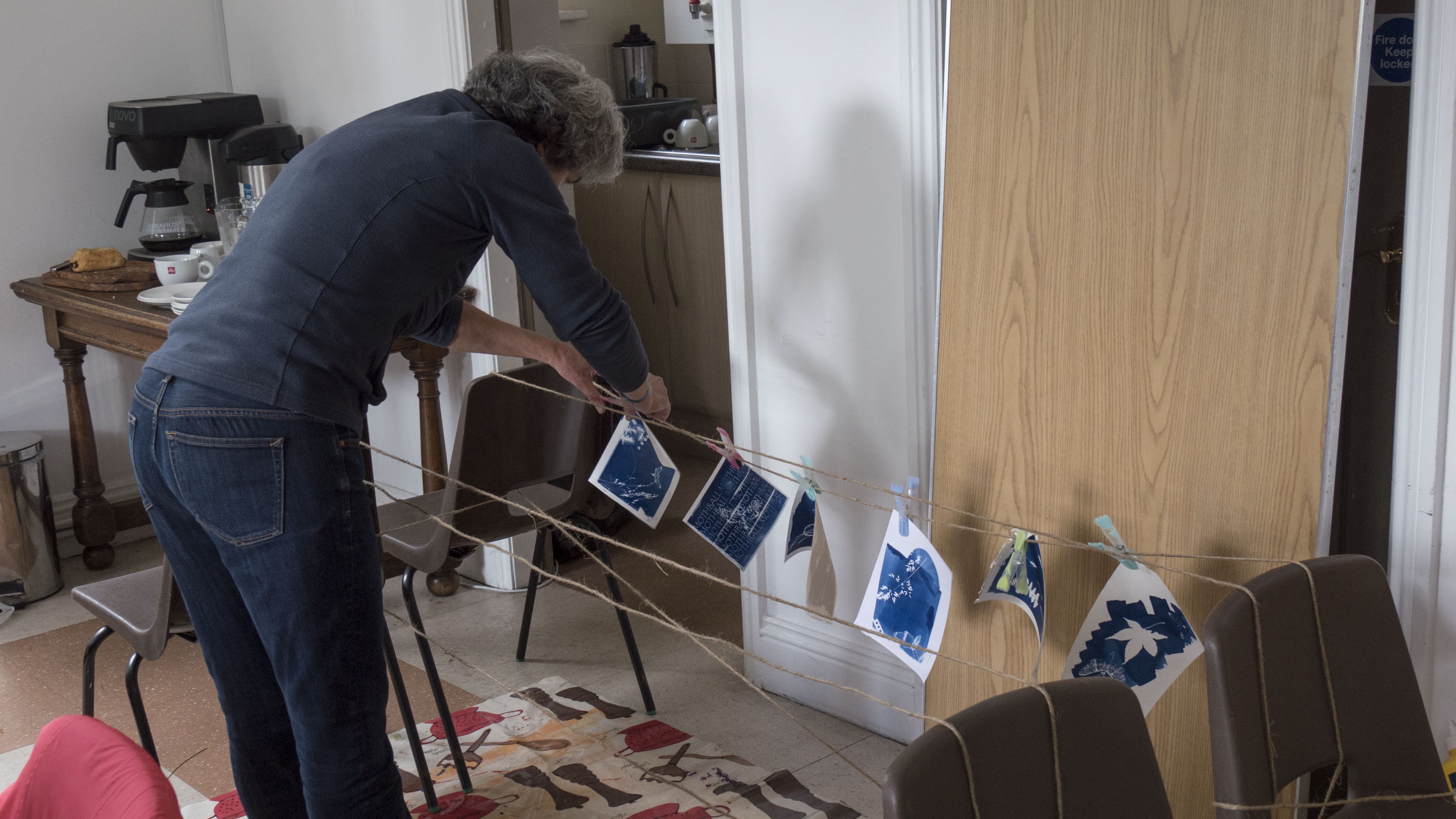The Collection Ideas Club involved local, active older people meeting at the museum to develop their own interests around the natural heritage collections, in particular moths and butterflies, and the parkland around the museum. There were two sessions, one by local artist Sheila Tilmouth, which focused on using specialist equipment to examine natural plants and specimens, encouraging participants to draw and respond to what they were seeing, and the second led by Ian Clegg (photography) and Angela Tait (textiles), which looked at moths and creating cyanotype prints. In each session the tables had items from the collections on them, which participants were free to look at, touch and feel.

In Sheila Tilmouth’s session, the group investigated natural specimens through a range of specialist equipment, starting with magnifying glasses, and moving on to binoculars, loops and stereoscopic microscopes. The workshops were taken in stages and layers so that participants could build their confidence in using the equipment. Each stage, as Sheila described, took participants to a level they haven’t experienced before. She encouraged participants to really look and investigate – carefully, slowly and closely – based on her idea that everyone must have this childlike enthusiasm and curiosity, and an awful lot of the natural world has a wonderful wow factor. Encouraging that sense of curiosity was key to Sheila’s very careful, layered approach, supporting and challenging participants to venture out into things just for the curiosity and not looking for an end result… I just think that’s liberating.

Ian and Angela’s session was very different from Sheila’s. Starting on a Friday evening, participants talked about natural heritage and helped to build a moth trap, which was set up over night. The group then reconvened the following morning to check the moth trap and to work on a creative activity, producing cyanotype prints from flowers and leaves that the group had collected.

Back to Museum Experiments